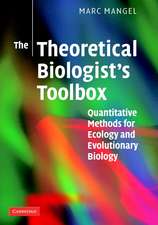Nekton
Autor Yu.G. Aleyeven Limba Engleză Paperback – 4 ian 2012
Preț: 646.62 lei
Preț vechi: 760.73 lei
-15% Nou
Puncte Express: 970
Preț estimativ în valută:
123.73€ • 134.82$ • 104.26£
123.73€ • 134.82$ • 104.26£
Carte tipărită la comandă
Livrare economică 23 aprilie-07 mai
Preluare comenzi: 021 569.72.76
Specificații
ISBN-13: 9789401013260
ISBN-10: 9401013268
Pagini: 444
Ilustrații: 441 p.
Dimensiuni: 152 x 229 x 23 mm
Greutate: 0.59 kg
Ediția:Softcover reprint of the original 1st ed. 1977
Editura: SPRINGER NETHERLANDS
Colecția Springer
Locul publicării:Dordrecht, Netherlands
ISBN-10: 9401013268
Pagini: 444
Ilustrații: 441 p.
Dimensiuni: 152 x 229 x 23 mm
Greutate: 0.59 kg
Ediția:Softcover reprint of the original 1st ed. 1977
Editura: SPRINGER NETHERLANDS
Colecția Springer
Locul publicării:Dordrecht, Netherlands
Public țintă
ResearchCuprins
1. Nekton as an Ecomorphological Type of Biont.- 2. Definition, History and Task of Nektonology.- 3. Nektonological Investigation Methods.- 4. General Remarks.- 1. Nekton: Systematics and Geographical Distribution.- I. Ecomorphological Classification of Nekton.- II. Systematic Composition, Geographic Range and Distribution in Bodies of Water.- 2. Fundamental Nektonic Adaptations.- III. Maintaining the Body Suspended in the Water.- IV. Creation of Propulsive Force (Locomotion).- V. Reducing Resistance to Movement.- VI. Controlling Movement.- VII. Camouflage and Defence.- VIII. Other Adaptations.- 3. Origins and Ecological Divergence of Nekton.- IX. Ecomorphological Classes of Nekton and their Origins.- X. Nekton and the Body of Water.- Conclusion.- Literature.- Name Index.- Animal Latin Names Index.














